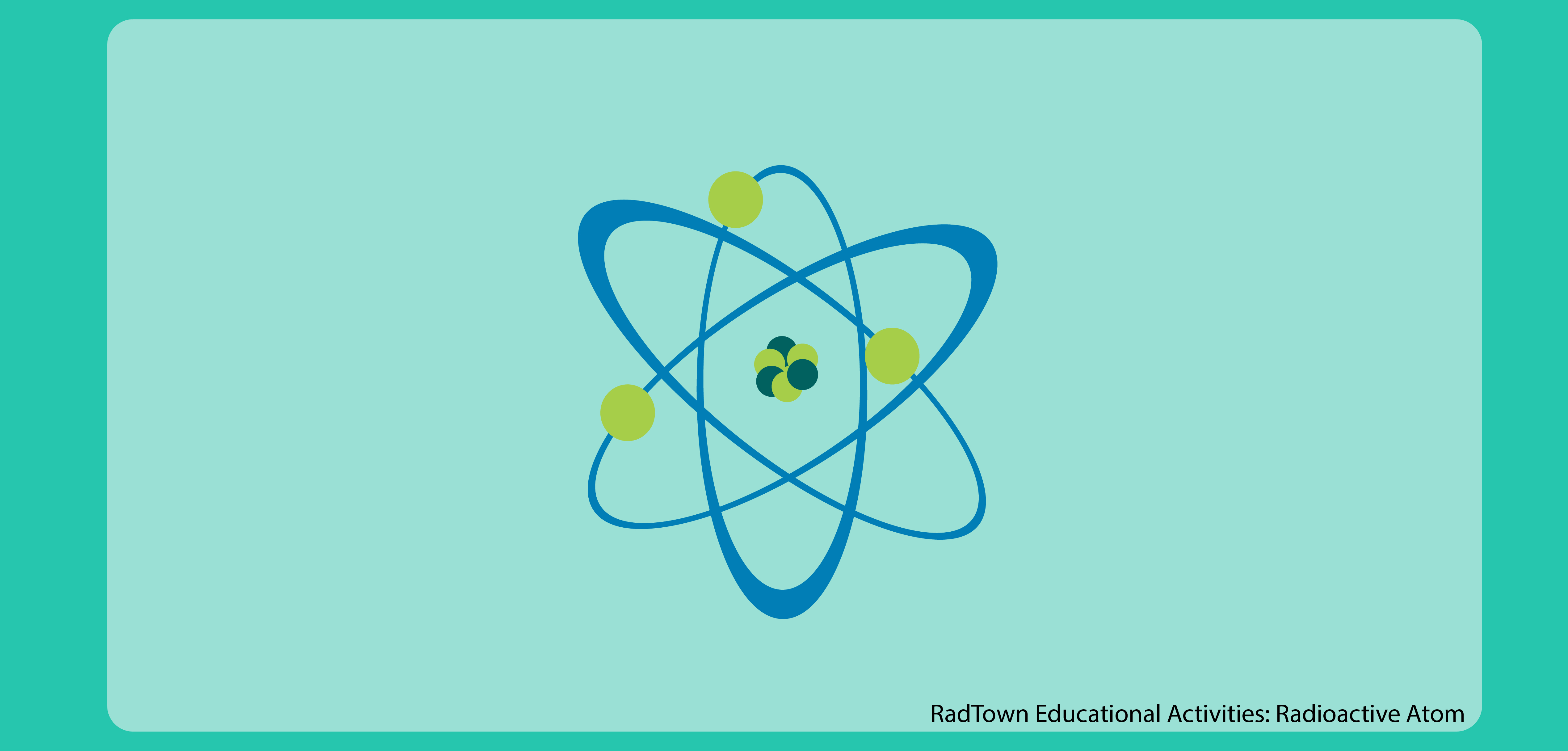RadTown Radioactive Atom Activity 3: Strong Nuclear Forces
A delicate balance of forces occurs naturally in every atom in the universe. Mesons and electromagnetic forces work against each other—one tries to pull an atom in towards itself, while the other tries to pull an atom apart. This activity uses common classroom materials to better understand atomic forces. This activity is intended for middle and high school students.
- Objectives
- Next Generation Science Standards
- Materials and Resources
- Time
- Directions
- Common Core State Standards
- Printable Worksheets and Classroom Aids
Objectives
Students will:
- Learn about the delicate balance of forces that hold an atom together while electromagnetic forces try to pull the nucleus apart.
- Demonstrate the concept of the strong nuclear force.
- Discuss what occurs when the balance of forces is upset.
Next Generation Science Standards
The concepts in this activity can be used to support the following science standards:
- PS1. Structure and Properties of Matter
- PS2. Forces and Interactions
Materials and Resources
Each italicized document title can be found at the bottom of this page, and is available for printing and distribution.
- The Radioactive Atom: Teacher Background Information
- Vocabulary Materials
- Strong Nuclear Forces Worksheet (one per student, pair or group) and Strong Nuclear Forces Teacher Answer Key
- Two magnets (per group)
- One small ball (e.g., ping pong ball) or object that can be tossed; attach a short string (1 to 2 feet long) to it to represent a meson
Time
45-60 minutes.
Vocabulary
- Atom
- Electron
- Ionizing radiation
- Meson
- Neutron
- Nucleus
- Proton
- Radioactive atom
- Strong nuclear force
Directions
- Start with a vocabulary activity if students are not familiar with radiation and the terms used in this activity, or provide students with the terms and definitions.
- Ask students to hypothesize or explain why some elements are radioactive or what makes them radioactive. If needed, prompt them to think about the smallest form of an element — the atom — and what might occur within the atom, or more specifically the nucleus of an atom, to make an element radioactive. Any change in the number, the arrangement, or energy of the nucleons can upset this balance and cause the nucleus to become unstable or radioactive.
- Explain that the upset of the delicate balance of forces in a nucleus can occur naturally (through radioactive decay) or through man-made processes (e.g., fission or the splitting of atoms to produce energy). Ask students to provide examples of how we benefit from and use unstable, or radioactive atoms. We use radioactive atoms to generate electric power in power plants and in space probes, kill cancer cells, kill bacteria, perform medical scans of internal organs and conduct some manufacturing processes.
- Provide students with a copy of the Strong Nuclear Forces Worksheet and magnets. Have students work in small groups to answer questions 1 through 3. The questions are related to the structure of forces at play within the nucleus of an atom. Resources, if needed, may include student textbooks and the Rutherford-Bohr Theory of Atomic Structure section of The Radioactive Atom: Teacher Background Information.
- Explain that while there are electromagnetic forces (observed by students when answering question 2) trying to pull the positively charged protons and the nucleus apart, there is also a strong nuclear force holding the nucleus together (proton-to-proton, neutron-to-neutron and proton-to-neutron). The strong nuclear force is helped by:
- The presence of neutrons (to help counter the competing or repelling forces of protons).
- The exchange of a particle, called a meson.
The exchange of a meson creates an extremely strong nuclear force that holds the nucleons together. The strong nuclear force only extends a very short distance, so the nucleons must remain close to each other to remain tightly bound.
- Demonstrate the concept of the strong nuclear force with students.
- Ask for three student volunteers.
- Identify two of the volunteers as protons and neutrons in the nucleus of an atom and have them stand close together ― within 1 to 2 feet from each other.
- Ask the third volunteer to stand off to the side ― at least two 2 feet away.
- Have the two close volunteers lightly toss the small ball or object with a string (meson) to each other. NOTE: The person tossing the object should hold onto the string to show the connection between the two.
- Explain that they are connected by the meson (object being tossed between them).
- Have one of the volunteers standing together try to toss the meson to the volunteer standing further away. NOTE: the person tossing the object should hold onto the string and the meson should fall to the ground.
- Explain that changes in the number, the arrangement or the energy of the nucleons can upset the balance of forces and cause the nucleus to become unstable or radioactive. Generally, this occurs in atoms (or nuclei) with more than 82 protons. Unstable atoms will attempt to become stable by changing into a new form (e.g., a new isotope or element), and energy is released in the form of ionizing radiation (e.g., alpha particles, beta particles and gamma rays). The meson (small object that they are tossing) represents the energy being expelled from an unstable nucleus.
- Direct students back to their Strong Nuclear Forces Worksheet to answer question 4. Review their responses and answer any questions.
- Conclude by asking students what they learned about atoms and the forces at play in stable and unstable atoms.
The concepts in the Strong Nuclear Forces activity align with the following:
CCSS Language Arts Standards for Literacy in History/Social Studies, Science, & Technical Subjects:
- CSSS.ELA-Literacy.SL.6-12.1 Comprehension and Collaboration
- CSSS.ELA-Literacy.RST.6-12.7 Integration of Knowledge and Ideas
- CSSS.ELA-Literacy.WHST.6-12.1 Text Types and Purposes

